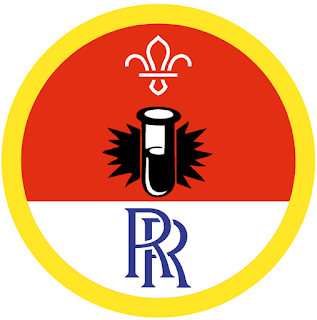Scouts and Explorers: Condensation Station
What do you know about clouds? Find out more as you create your own sky-scape and fill it with clouds.
Today we’re going to develop skills by learning about
different cloud types and how they affect air activities. As we’re not spending
as much time outside right now, we’re going to bring the clouds indoors.
Before we get started, we’ll need some cotton wool, a clean,
empty plastic bottle, matches, and some warm water. We’re going to take the
label off the bottle so we can see inside.
Clouds form when water vapour in the air cools down and
condenses, turning back into liquid water. Water droplets form more easily if
they’ve got something to stick to like dust or smoke.
There are three main types of cloud so we’ll start by adding
them all to our skyscape – you can make it on a table or the floor, wherever
works.
To make our cirrus cloud we’re going to tease our cotton
wool apart so it’s all wispy. To make a cumulus cloud we’re going to bunch up
our cotton wool into, well, a cloud shape; and to make our stratus cloud we’re
going to spread out our cotton wool so it’s like a blanket.
There are also words to describe how high clouds are in the
sky. Alto describes mid-level clouds, so that one’s an altostratus cloud and
cirro is for high-level clouds, so that one’s a cirrocumulus cloud.
And one more new word – cumulonimbus clouds are a big pile
of clouds that bring rain. That’s one we’re all familiar with.
So now we’ve got our sky-scape full of different types of
clouds it’s time to add our own. We’ll need the bottle, warm water, and
matches.
We’re going to pour a few centimetres of warm water into the
bottle and then put the lid on tight and shake it so the inside’s coated with
water.
Once that’s done, carefully light a match – let it burn most
of the way down, then blow it out, drop it into the bottle, and put the lid on
nice and tight. It’s OK if it takes you a while to get the hang of it, just
try, try again.
The good news is that planes cope pretty well with clouds.
Most of the time, pilots use autopilot or digital maps when visibility’s
reduced. They may navigate around big clouds (especially the cumulonimbus
clouds) because they can cause turbulence so avoiding them makes the flight
smoother for the passengers.
This activity
completes:
Scouts Meteorologist
Activity Badge – Requirement 3
Air Activities Staged
Activity Badge Stage 5 – Requirement 6






